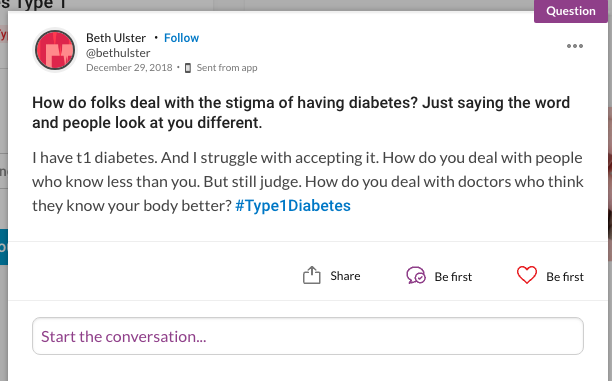How old were you when you were diagnosed with type 1 diabetes? Your answer could predict your risk for developing additional autoimmune disorders.
Type 1 diabetes is an autoimmune disorder in which the body’s immune system starts “attacking” the cells of the pancreas that produce insulin. The exact cause of type 1 diabetes is unknown, though some risk factors may include family history, genetics, and possibly exposure to viruses or environmental factors. Although type 1 diabetes can begin at any age, it is most commonly diagnosed between 4 and 7 years old and 10 and 14 years old.
A study published in the journal Diabetes Care in January looked at data from 1,212 patients from the Washington University Diabetes Center and found that people who were diagnosed with type 1 diabetes later in life had a higher risk of developing autoimmune disorders.
Connect with our diabetes community!
Answer this Mighty Member’s question:
The later study participants were diagnosed, the more likely they were to develop one or more autoimmune diseases.
Age 10 or younger at diagnosis: 68.7 percent had no additional autoimmune disease, 21.8 percent had one, 7 percent had two.
Age 11 to 20 at diagnosis: 67.6 percent had no additional autoimmune disease, 22.3 percent had one, 8.5 percent had two.
Age 21 to 30 at diagnosis: 66.7 percent had no additional autoimmune disease, 23.1 percent had one, 7.4 percent had two.
Age 31 to 40 at diagnosis: 59.6 percent had no additional autoimmune disease, 29.5 percent had one, 6.9 percent had two.
Age 40 or older at diagnosis: 52.5 percent had no additional autoimmune disease, 28.7 percent had one, 11.2 percent had two.
The “over 40” age cohort also had the highest percentage of people who developed three additional autoimmune diseases (4.2 percent) and four or more additional autoimmune diseases (3.5 percent). Only 0.8 to 3.4 percent people in the younger age cohorts developed three autoimmune diseases in comparison. Less than one percent developed four or more.
The study also found that women were more likely than men to develop additional autoimmune diseases. The most prevalent type 1 diabetes-associated autoimmune diseases were thyroid disease, collagen vascular diseases and pernicious anemia.
The study authors recommended that individuals diagnosed with type 1 diabetes at an older age (particularly women) should be monitored for other autoimmune conditions.
Getting diagnosed with a second (or third or fourth) chronic illness can be tough, as Mighty contributor Katie Jo Ramsey discussed. She shared her three tips for getting another diagnosis: Listen to your body, value your health, and let yourself grieve. She wrote:
Giving yourself the space to grieve your illnesses isn’t a pity party. Even though you’re used to being sick, it’s a blow to find out that one more thing is wrong with your body. Let yourself cry about it. Talk to a friend. Go back to see your counselor. (That’s what I did.)
Whether you have one diagnosis, two or five, I hope you’ll be brave and value yourself today.


